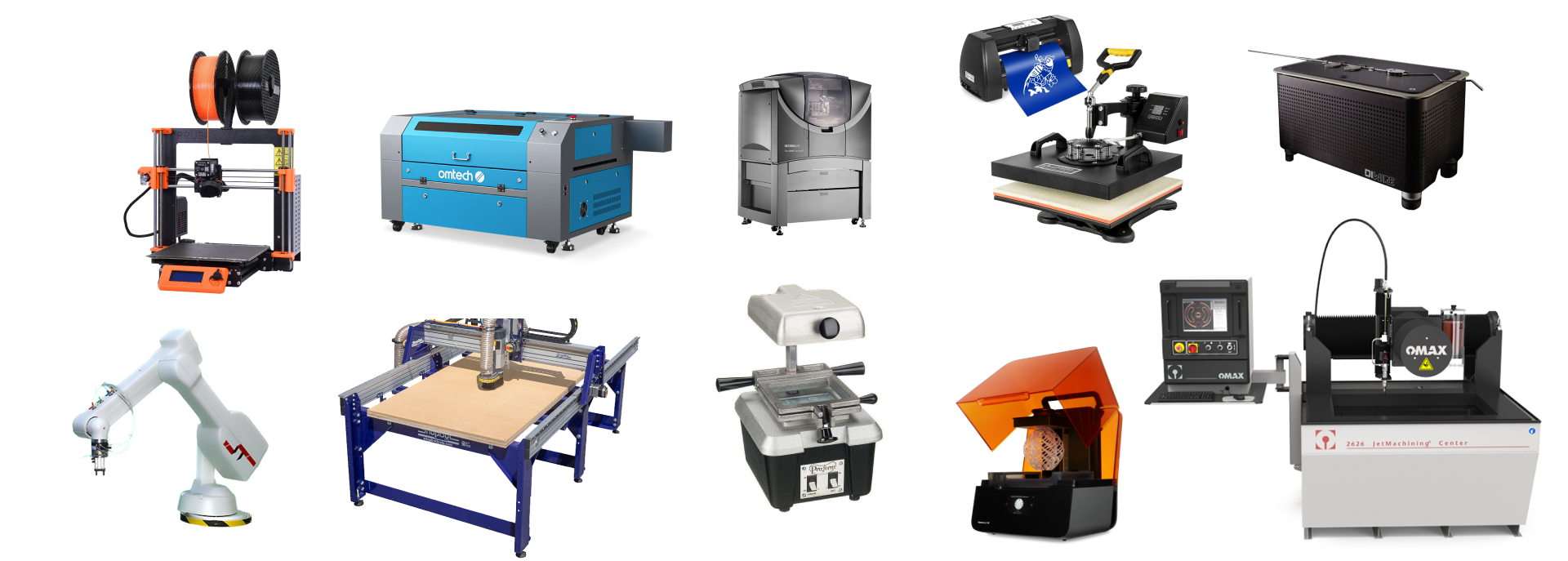Streamlining Makerspace experience for students and staff with multi-modal AI
Role
UX Designer
Platform
Mobile + Kiosk + Web
Time
Dec 2024 - Feb 2025
Tools
Figma
Overview
Designing an AI-assisted system solution for Makerspace usage and management
Navigating through a Makerspace can be challenging
A Makerspace is a collaborative studio or community workspace offering tools, equipment, and resources for hands-on projects in DIY, digital fabrication, and rapid prototyping.
Why this project?
Personal experience - As a designer and maker, I’ve seen many students struggle to navigate and find the right support when they need it.
Common problem - there’re 2000+ Makerspaces across United States
Transforming makerspace experience with AI
Students and staff facing similar issues – unclear workflows, inconsistent communication, and frustration in getting timely help
Overwhelming tool landscape - overwhelming variety of machines and software, lack of clarity on what each tool does or how to use them
Lack of guidance - limited onboarding, scattered documentation, no intuitive support system for navigating the space
How might we leverage multi-modal AI to create a system that increases Makerspace accessibility for students, while providing contextual support for staff’s studio management?
Solution overview - a tool-access and guidance system to streamline student and staff workflows
USER RESEARCH
Identifying key insights for students and staff
Overwhelmingly complex tools, materials and equipment
30+ different equipment, such as 3D printers, laser cutters, CNC machines, metalworking woodworking tools and robotic arm.
40+ material options for 3D printing and laser cutting, including PLA, resin, carbon fiber, and TPU.
90+ smaller tools are available for precise tasks and detailed work, such as soldering irons, hand drills, calipers, rotary tools, and clamps.
Building smarter space with Generative AI
Gen-AI and LLMs open up new possibilities for addressing challenges in Makerspace.
Identify user pain points through interviews
I conducted five 45-min user interview sessions with students and staff at UC Berkeley’s Makerspace.
IDEATION
Brainstorming and feature prioritization
Feature prioritization on intelligent assistance and resource visibility
Mapping out user flows for student mobile app and staff desktop app
After brainstorming 19 features for both the student and staff sides, I used a 2×2 value matrix to prioritize them based on user value and business impact.
DESIGN
Explore different options through design iteration
Wireframes and low-fi prototypes
I created wireframes and low-fi prototypes for the student-facing mobile app and kiosk, as well as the staff-facing desktop app.
FINAL DESIGN
















